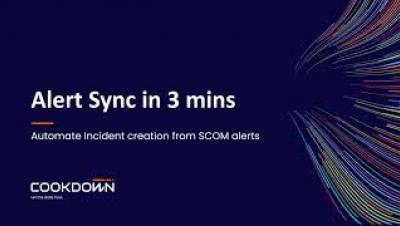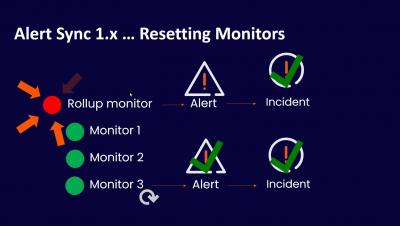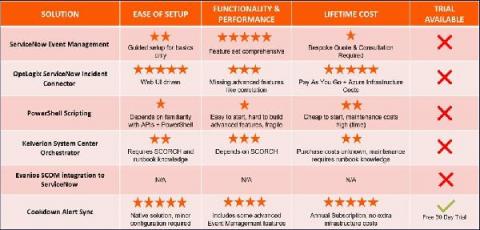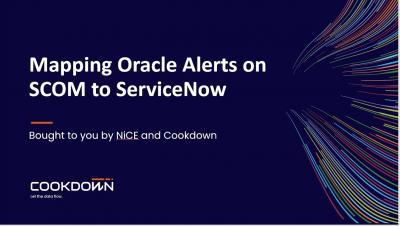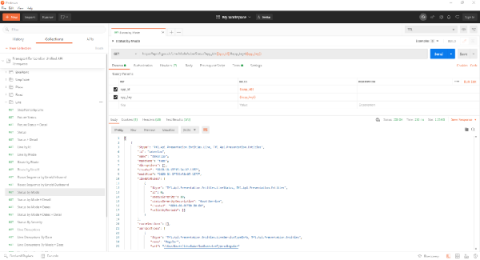Operations | Monitoring | ITSM | DevOps | Cloud
Cookdown
Cookdown Alert Sync 2 0 Release Webinar 3-Dec-2020
Alert Sync 2.0 is here!
Alert Sync converts critical Alerts into actionable Incidents using real-time, two-way synchronization. This seamless integration of SCOM and ServiceNow, creates the perfect partnership between Alerts & Incidents, so you can successfully manage them throughout the lifetime of an issue. Gone are the days of scripting, we've baked all this into our new features, saving you time & optimizing incident management, with our cool new features.
What's the best way to create ServiceNow Incidents from SCOM?
If you have ServiceNow and SCOM you will want to integrate these tools to ensure they deliver maximum value for your business. There are four key benefits of creating ServiceNow incidents from SCOM: 1) Increase value of existing infrastructure monitoring tools by consolidating information and integrating them with connectors. 2) Understand root cause of the problem and reduce Mean Time to Repair (MTTR) by transforming incidents into actionable alerts.
Mapping Oracle Monitoring Alerts on SCOM to ServiceNow
Monitoring the London Underground with SCOM
This week I had the honour of speaking at Silect’s MP University and my hot topic was Cookdown’s free PowerShell Authoring MP. I was looking to make the session a little fun, in homage to the original “Fun SCOM Monitoring” video from CTGlobal on monitoring a coffee machine with SCOM 2007 R2. So, I thought what’s the next best thing after coffee? Beer!
Why is it important to reduce the size of my SCOM Data Warehouse?
A company’s data warehouse is usually the largest database a company uses when dealing with SCOM data, this means it is often the most expensive to manage and maintain. They can also be a drain on your infrastructure, taking a long time to backup, slowing down reporting, consuming more hardware space and can be very time consuming to recover, if they go down.
Tuning to save resources
Typically when tuning SCOM we talk about saving time and reducing alert noise, but today I’m going to make a quick post on saving database space through tuning. If you’d like to get an idea of what your current database usage is, take a look at this tool from scom2k7.com. This will give you a breakdown of where space is used in the SCOM Data Warehouse.
How much time can Easy Tune really save?
Too often companies make vague “saves you loads of time” sorts of claims about their products, without quantifying exactly how the product will save you time and how much time. I realized we have been guilty of this in the past, so I’m here to set the record straight! In this blog we will quantify exactly how much time (and effort) Easy Tune will save you.
Associating Incidents to a Problem
As defined by ITIL an ‘Incident’ is an unplanned disruption or reduction in quality of service and a ‘Problem’ is the underlying thing that caused the Incident. They are obviously related and there are endless pages on the internet going into incident and problem management as part of ITSM, so we won’t delve into this topic in any detail. The key issue is resolving the incidents themselves isn’t always enough, you need to get to the route cause of the problem.


